Artificial Neural Networks (ANN) Approach to Modelling of Selected Nitrogen Forms Removal from Oily Wastewater in Anaerobic and Aerobic GSBR Process Phases †
Abstract
:1. Introduction
2. Materials and Methods
3. Results
4. Discussion
5. Conclusions
- The values approximated by the ANN models showed a good fit to the values observed both in the anaerobic phase and in the aerobic phase of the GSBR reactor. Prediction quality for presented models varied form r = 0.996 to r = 0.999.
- The BOD load in the wastewater inflowing to GSBR reactor had the greatest impact on the calculation algorithms approximating concentration of N-NO3 in the anaerobic and aerobic phases.
- The concentration of N-NH4 and total nitrogen showed the greatest sensitivity to the concentration of those nitrogen forms in wastewater.
- Activated sludge technological parameters did not affect significantly ANN algorithm calculation in anaerobic and aerobic phase. This phenomenon could be resulting from aerobic granular sludge tolerance to toxic agents in wastewater, in this case, oily substances. Therefore, influence of oily substances on wastewater treatment process has not been observed during experiment.
Author Contributions
Conflicts of Interest
References
- Corsino, S.F.; Capodici, M.; Morici, C.; Torregrossa, M. Simltaneous nitrition-denitrition for the treatment of high-strength nitrogen in hypersaline wastewater by aerobic granular sludge. Water Res. 2016, 88, 329–336. [Google Scholar] [CrossRef] [PubMed]
- Adav, S.S.; Lee, D-J.; Show, K-Y.; Tay, J-H. Aerobic granular sludge: Recent advances. Biotechnol. Adv. 2008, 26, 411–423. [Google Scholar] [CrossRef] [PubMed]
- Beaten, J.E.; van Loosdrecht, M.C.M.; Volcke, E.I.P. Modelling aerobic granular sludge reactors through apparent half-saturation coefficients. Water Res. 2018, 146, 134–145. [Google Scholar] [CrossRef] [PubMed]
- Ofman, P.; Skoczko, I. PAH removal effectiveness comparison from hydraulic fracturing model wastewater in SBR reactors with granular and flocked activated sludge. Desalin. Water Treat. 2018, 134, 41–51. [Google Scholar] [CrossRef]
- Zaghloul, M.S.; Hamaza, R.A.; Iorhemen, O.T.; Tay, J.H. Performance prediction of an aerobic granular SBR using modular multilayer artificial neural networks. Sci. Total Environ. 2018, 645, 449–459. [Google Scholar] [CrossRef] [PubMed]

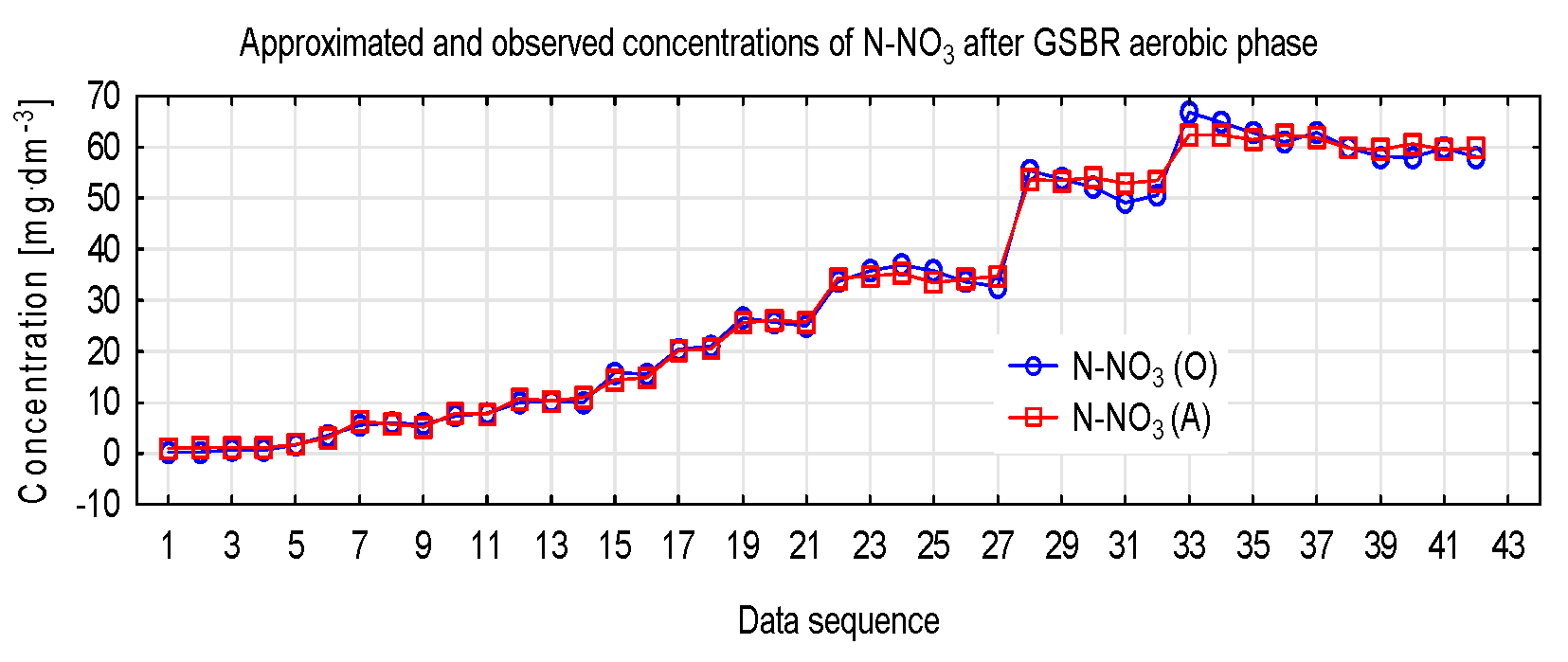
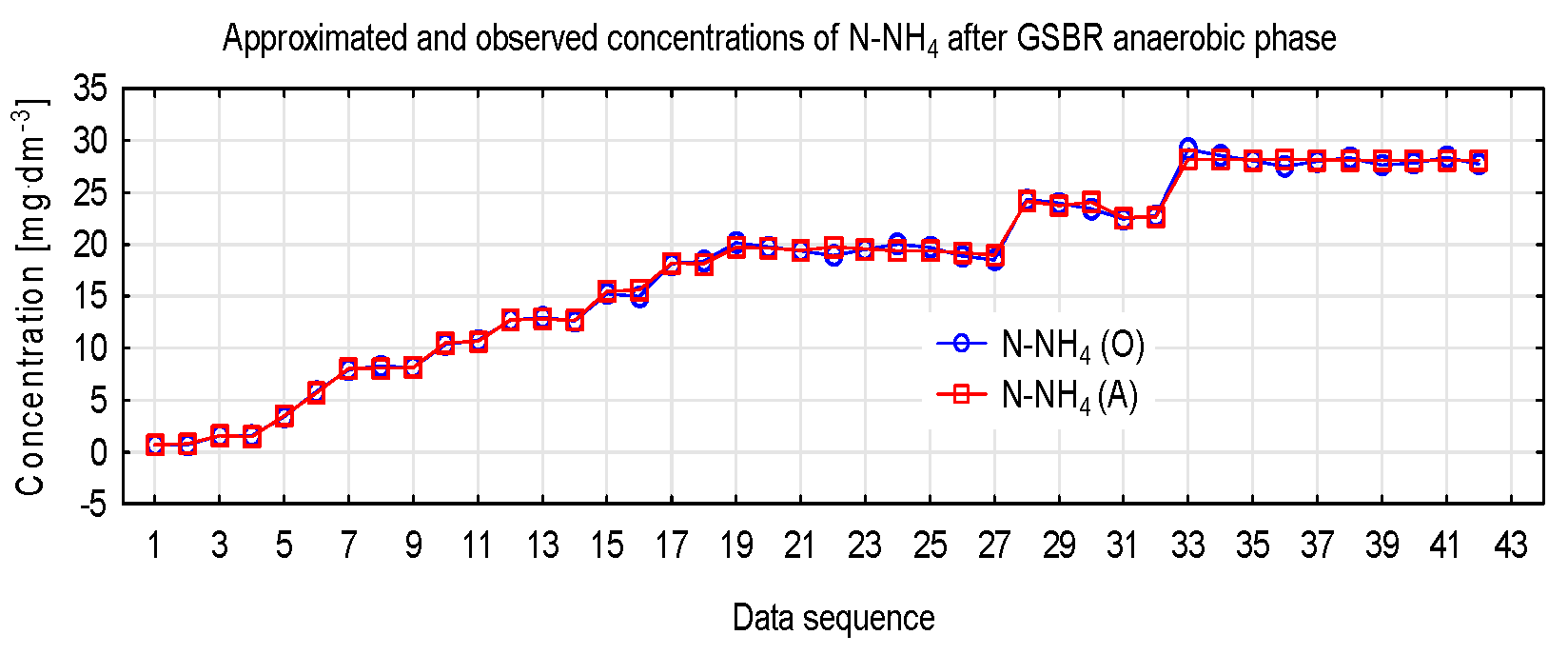
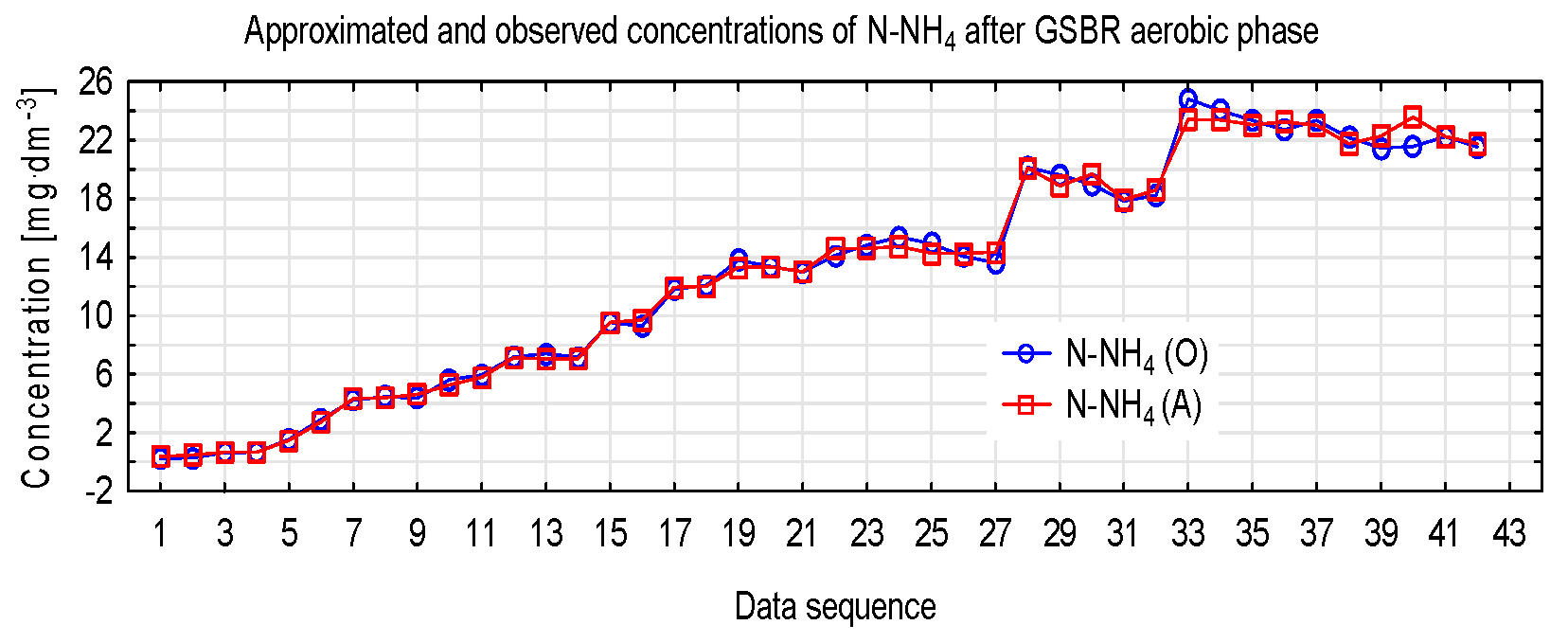
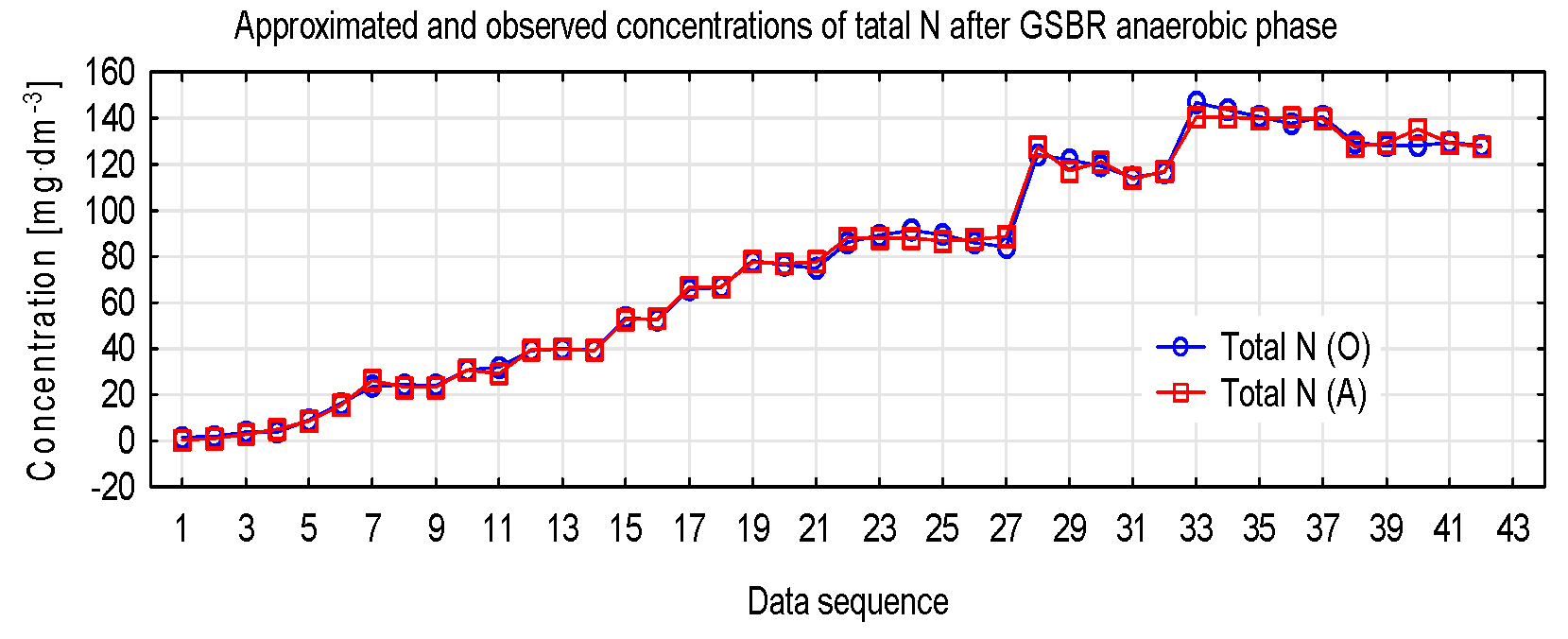
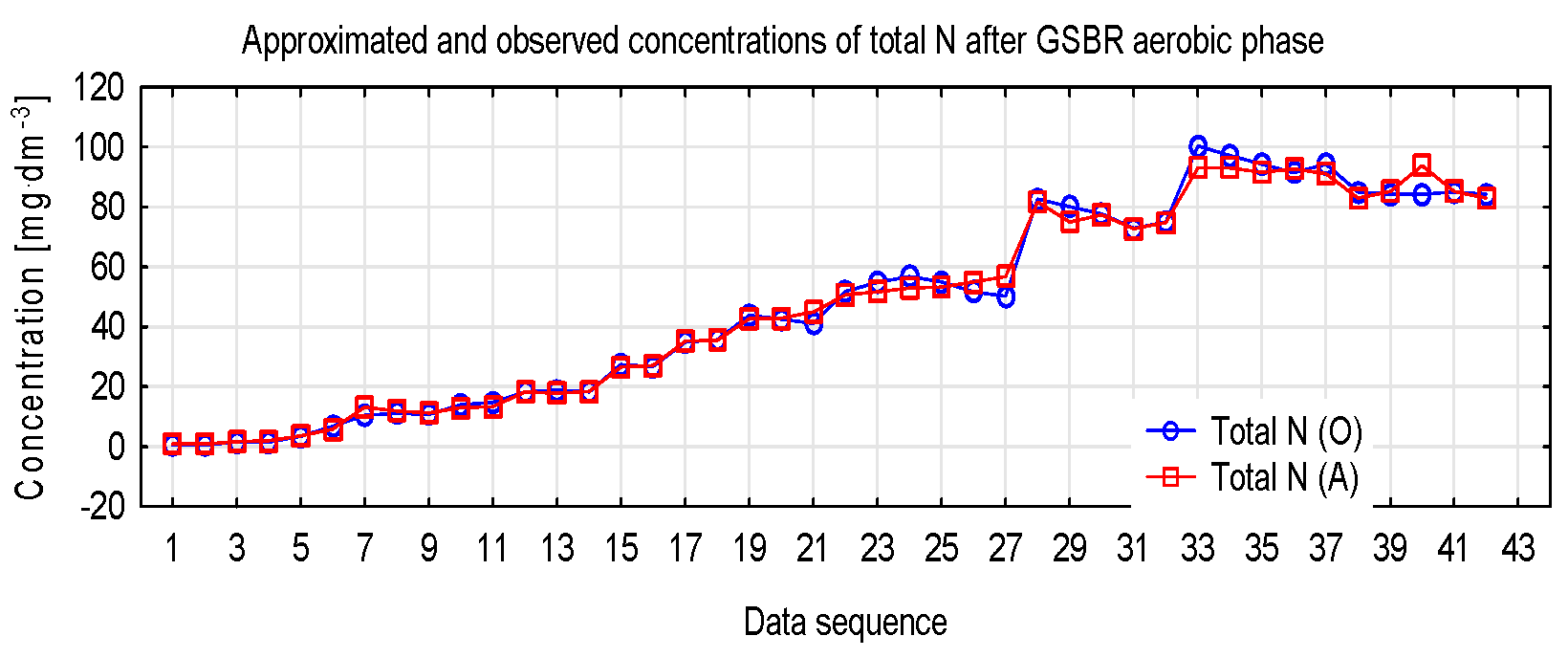
| ANN Topology | Estimated N form | Variables rank | ANN Prediction Quality (r) | ANN Error | ||||
|---|---|---|---|---|---|---|---|---|
| BOD Load | N Form | ASA | ASI | SRT | ||||
| MLP 5-6-1 | N-NO3 in anaerobic phase | 82.37 | 71.84 | 3.33 | 1.68 | 1.20 | 0.999 | 1.373 |
| MLP 5-7-1 | N-NH4 in anaerobic phase | 22.77 | 1215.16 | 5.47 | 3.85 | 7.70 | 0.999 | 0.061 |
| MLP 5-9-1 | Total N in anaerobic phase | 84.34 | 87.47 | 3.06 | 3.69 | 1.06 | 0.999 | 2.757 |
| MLP 5-9-1 | N-NO3 in aerobic phase | 46.80 | 46.42 | 6.97 | 1.36 | 2.97 | 0.998 | 1.115 |
| MLP 5-4-1 | N-NH4 in aerobic phase | 59.43 | 69.98 | 7.23 | 3.60 | 4.49 | 0.998 | 0.139 |
| MLP 5-3-1 | Total N in aerobic phase | 30.37 | 30.75 | 2.58 | 2.12 | 2.67 | 0.996 | 3.950 |
Publisher’s Note: MDPI stays neutral with regard to jurisdictional claims in published maps and institutional affiliations. |
© 2019 by the authors. Licensee MDPI, Basel, Switzerland. This article is an open access article distributed under the terms and conditions of the Creative Commons Attribution (CC BY) license (https://creativecommons.org/licenses/by/4.0/).
Share and Cite
Ofman, P.; Struk-Sokołowska, J. Artificial Neural Networks (ANN) Approach to Modelling of Selected Nitrogen Forms Removal from Oily Wastewater in Anaerobic and Aerobic GSBR Process Phases. Proceedings 2019, 16, 16. https://doi.org/10.3390/proceedings2019016016
Ofman P, Struk-Sokołowska J. Artificial Neural Networks (ANN) Approach to Modelling of Selected Nitrogen Forms Removal from Oily Wastewater in Anaerobic and Aerobic GSBR Process Phases. Proceedings. 2019; 16(1):16. https://doi.org/10.3390/proceedings2019016016
Chicago/Turabian StyleOfman, Piotr, and Joanna Struk-Sokołowska. 2019. "Artificial Neural Networks (ANN) Approach to Modelling of Selected Nitrogen Forms Removal from Oily Wastewater in Anaerobic and Aerobic GSBR Process Phases" Proceedings 16, no. 1: 16. https://doi.org/10.3390/proceedings2019016016
APA StyleOfman, P., & Struk-Sokołowska, J. (2019). Artificial Neural Networks (ANN) Approach to Modelling of Selected Nitrogen Forms Removal from Oily Wastewater in Anaerobic and Aerobic GSBR Process Phases. Proceedings, 16(1), 16. https://doi.org/10.3390/proceedings2019016016





